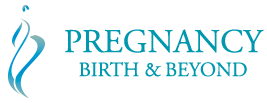
Finding ways of inducing labour naturally has never been more imperative. Medical induction of labour has been increasing since the 1980s. Nowadays over 25% of women have their labours induced and a further 19.2% will have their labours sped up by artificial means (Australian Mothers and Babies 2009). Common methods used are sweeping of the membranes, rupturing of the membranes (breaking the waters), using labour-inducing drugs administrated as a gel on the cervix, or intravenously.
Benefits of induction may exist for women who are overdue or whose waters have broken spontaneously without going into labour. However medical induction is not without risks. Studies have shown that while the rates of medical induction are rising, improved outcomes for women are not. In particular, women whose labours are medically induced tend to be less satisfied with their birth experience. Additionally, the use of induction can result in complications and lead to further medical inventions as labour progresses, sometimes referred to as the ‘cascade of intervention.’
In order to maximise their chances of vaginal birth, many women explore ways of inducing labour naturally in order to avoid a medical induction and its associated risks. Natural practices and products are referred to as ‘complimentary or alternative medicines’, and are largely recommended based on traditional knowledge. Unfortunately, there is little in the way of clinical evidence regarding the effectiveness of many of these practices and products, and a good deal of contradictory or unreliable information exists.
Traditionally castor oil, evening primrose oil and the herb blue cohosh have been used to induce labour.
However clinical trials show little advantage in using castor oil or evening primrose oil, and castor oil, in particular, can produce some unpleasant side effects. No research exists on the benefit of blue cohosh, and it has been inconclusively associated with two infant deaths so is perhaps best avoided.
While there is a common belief that sexual intercourse may assist in ripening the cervix and result in the onset of labour, clinical trials have provided no evidence to support this. However trials have shown stimulation of the breasts, and in particular, the nipples may induce labour in some women, although the reason is unclear. Similarly, thousands of women take a raspberry leaf to prepare their uterus for labour and some evidence exists to suggest this may reduce the instance of pregnancies extending beyond 40 weeks. The use of acupuncture may also assist in inducing labour in some women.
Generally speaking, nipple stimulation, consuming raspberry leaf, and undergoing acupuncture are considered safe for most women and so may be viable options for inducing labour naturally. However always ensure acupuncture is administered by a qualified practitioner and consider seeking advice from your midwife or doctor before using natural therapies, especially if your pregnancy is considered ‘high risk.’
Source: Hall, H, McKenna, L. and Griffiths, D. (2012). Complementary and alternative medicine for induction of labour, Women and Birth 25(3), pp. 142—148.
Reference: Australian Mothers and Babies 2009 (2011). Australian Institute of Health and Welfare: Canberra. Viewed online 6 December 2012 < http://www.aihw.gov.au/publication-detail/?id=10737420870>.
Page revised on 10th December 2021


Recent Comments